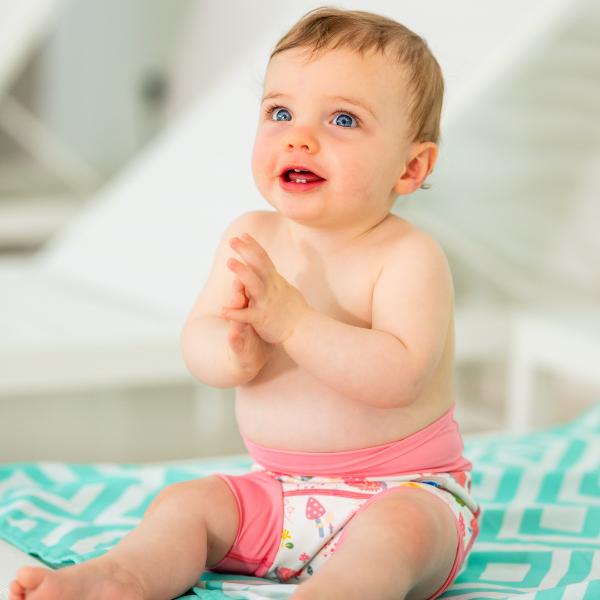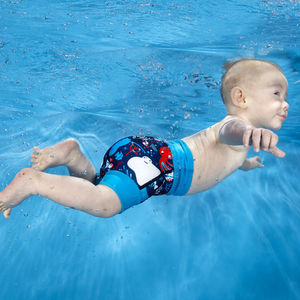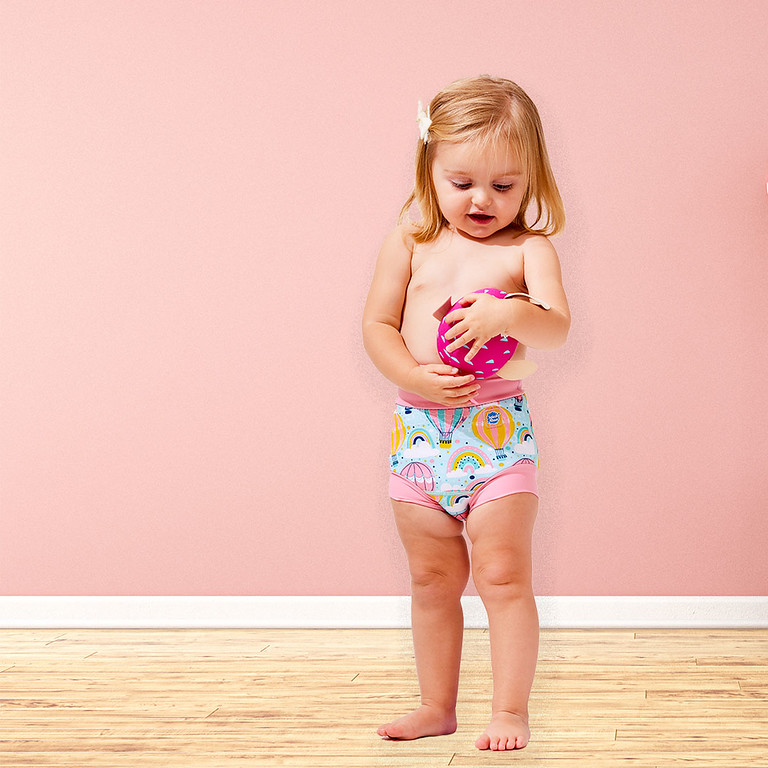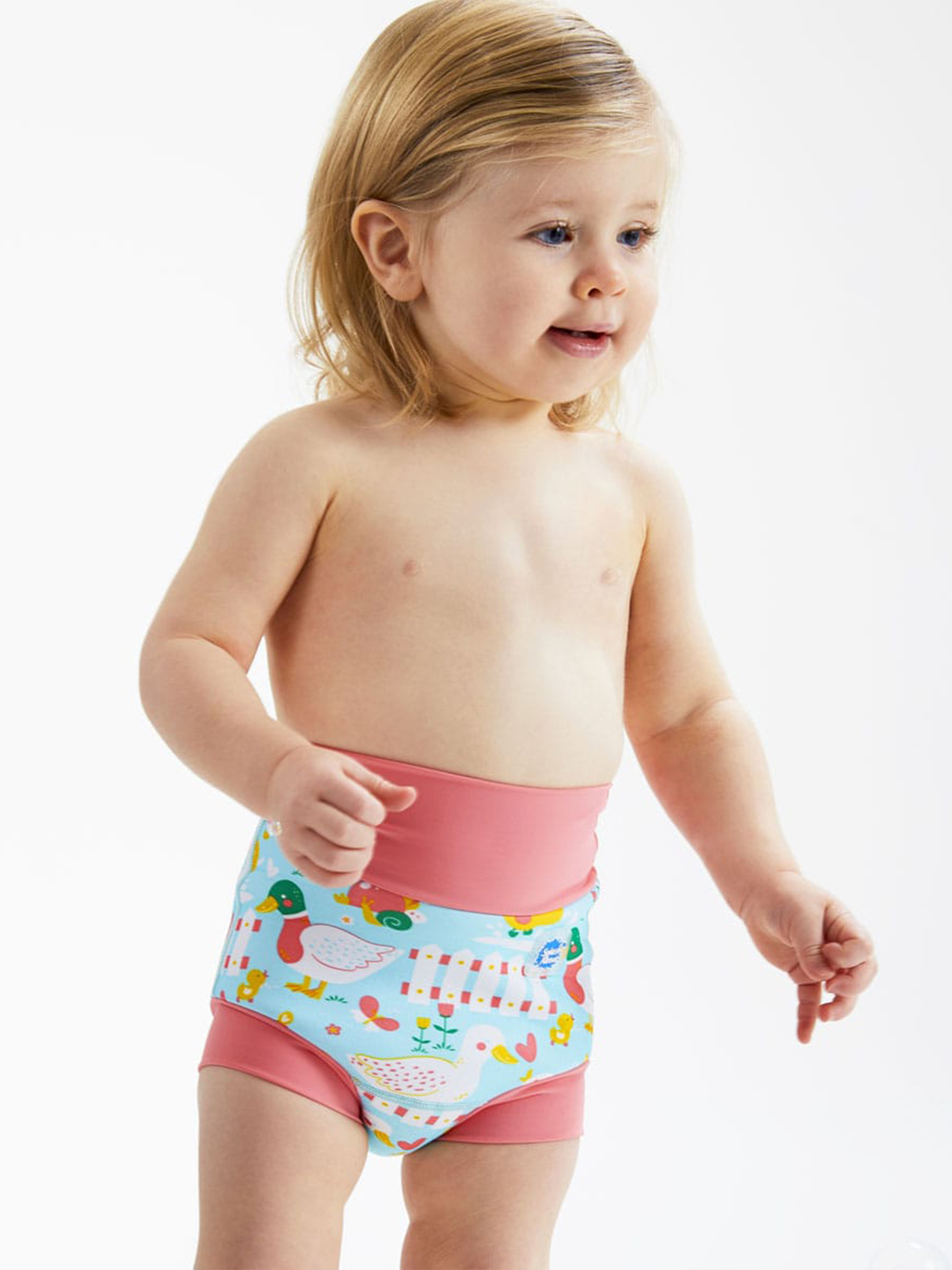Posted 29th October 2019
Updated 10/01/2024
Why are Swim Nappies Important?
One of the most important things to consider before starting to swim with your baby or toddler is the use of swim nappies.
There is a wide variety available on the market, and initially, it can be a bit confusing to determine the best option—understanding which will be the most reliable and cost-effective. That's precisely why we're here to explain all the ins and outs of swim nappies, helping you get a firm grasp on them.
Understanding Swim Nappies
Why do we need swim nappies?
Swim nappies have one main purpose: to prevent faecal matter from entering a pool. Many people do not realise that swim nappies do not hold urine. This has never been a feature of a swim nappy and there is currently no swim nappy, reusable or disposable that will contain urine.
The reason that they cannot be absorbent is that they would also soak up the water from the pool, therefore, making the nappy heavy, altering its shape, but more importantly, becoming a potential water safety issue as it will prevent your baby from moving effectively and may drag them down.
Have you ever accidentally got a regular nappy wet? If so, you will be very aware of all of these problems.
Not only is it very important to have a swim nappy for every visit but it is also important to have one that fits correctly because if a swim nappy does leak faecal matter, the pool will have to be immediately evacuated and shut down for cleaning– which will take on average 4 hours to fully disinfect. A swim nappy helps to keep the pool a clean and safe environment for everybody.
What to Choose
Just like your nappy choice, your swim nappy decision will usually come down to personal taste but to help to shed a little more light on the matter, here are some facts about disposables and reusables.
Disposables
Disposables are cheap to buy but in the long term, you will end up spending more on these than on a reusable swim nappy. They are readily available in all supermarkets which makes them easy to find, they come in different sizes and are usually a good fit for most children.
Reusables
Reusables will cost you a little bit more to purchase upfront but once you have one it is going to last. Not only is this kind to your wallet, but it is also good for the environment.
Reusable swim nappies cause about 1.5-2.5 less CO2 production during manufacturing, use and waste processing compared to disposable swim nappies. This includes the washing of them too.
Reusable swim nappies are available in a variety of sizes from birth to toddler and beyond, but you will need to check each brand for their own measurement and weight charts prior to buying. You can also purchase a nappy wrap or liners to help with any accidents and to make the cleaning up process easier.
Another important point to consider is taking your swim nappies on holiday. If you are going abroad for 2 weeks, you will need to take swim nappies with you.
By taking disposables you will require the space for approximately 20 nappies which can be a real inconvenience, especially with weight regulations added in. Compare that to 1 reusable swim nappy and you can start to see that this option has far more benefits for your lifestyle.
The key thing about reusables is that a style like the Happy Nappy™ or the Happy Nappy Duo™ will not leak, it will move with your child and be far more comfortable due to the materials it is made from.
Washing a Reusable
A reusable swim nappy, like the Happy Nappy™ isn't difficult to look after. Neoprene nappies cannot be machine washed or tumble dried, We recommend a hand wash in warm water without conditioner. Roll in a towel and then leave to dry flat and away from direct sunlight.
Fit Check
Understanding how to fit a reusable neoprene nappy is very important. A correctly fitting nappy may feel like a bit of a struggle to get on the very first time but this is actually quite essential.
The Lycra band must sit tight against the skin on both of your baby's legs and their waist with no gaping, in order for it to work effectively.
You should be able to comfortably fit a finger against your baby’s thigh in the leg opening, but no more.
A tip to help you out with fitting the reusable neoprene and to prevent your baby from being hurt is to pull the nappy right up to the top of your baby’s legs before you attempt to pull it up over the under-nappy and then up to the waist.
The waistband should then sit quite high on the tummy and be over the belly button. If you find that the nappy keeps slipping down then either it is too big or the Lycra fibres in the waistband have deteriorated.
To test this, gently pull the waistband and let it go. It should immediately pingback to the body and stay quite tight against your baby's skin. If there is any looseness or does not retain its position on the body then it is time to purchase a new nappy.
For more details on how to dress your baby in Splash About nappy's, please read The Happy Nappy™ & Happy Nappy™ Wetsuit Dressing Guide
When Should a Child Stop Wearing a Swim Nappy?
Most swim schools require your child to wear a swim nappy until 3 years old, even if your child is fully potty trained, as they actually see more accidents from children who are toilet trained.
A reusable swim nappy does not inhibit or restrict children in any way, so there isn't any urgent rush to stop wearing swim nappies immediately. If your toddler feels too babyish in the Happy Nappy™ you could consider Splash Jammers. These are neoprene Jammer style nappies, that provide the same leak assurance as the Happy Nappy™ , whilst looking like regular, grown up swimwear.
Important Points to Remember
It is very important to remember these key points when it comes to swimming:
- Do not go swimming if your child has or has had diarrhoea recently. Pools will have their own sickness policies on this and some will state a period of 2 weeks before swimming again. Swim nappies cannot effectively hold stools this loose.
- Take spare swim nappies with you in case of an accident.
The double nappy system is recommend by most UK swim schools. - Choose a nappy that fits snugly to the body. Do not buy a reusable nappy for them to grow into, it will not do the job required of it.
- Check your reusable before each swim for any wear and tear.
Encourage your child to take regular toilet breaks (age depending). - Check your baby's swim nappy regularly during your swim and change if you are aware of a poo.
- However, probably one of the most important things to remember and understand about swim nappies is that it is your responsibility to be prepared prior to entering a pool.
We highly recommend trying swim nappies on before your first swim session, making sure that the fit is correct, that your child is happy and that you can easily put it on.
Understanding swim nappies is far easier once you break it all down and are made aware of all of the choices out there.
For more information take a look at our Happy Nappy™ range here, or our Help Centre guides to swim nappies.




